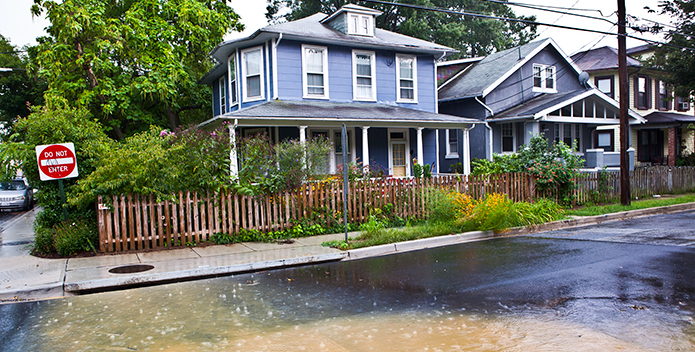The following first appeared in Penn Live and the Times Leader.
On behalf of the conservation community, I extend my sincerest apologies.
Collectively we have failed you, the public, on communicating what science has shown us: that our stormwater infrastructure—the system that collects, concentrates, and conveys runoff from built areas—is failing and it's polluting the water we drink, fish, and recreate in. It's flooding our streets, basements, and washing our land and property away.
Simply stated, when it rains, runoff from hard surfaces such as rooftops, parking lots, streets, and even lawns is shuttled to the nearest river or stream, often by underground pipes. Along the way, things like motor oil, pet waste, lawn chemicals and fertilizers, cigarette butts and garbage, to name just a few, hitch a ride.
With intense rainfall like we saw so much of last year, the sheer volume of water in those pipes—some of which haven't been maintained or updated for 25, 50, even 100 years—hits our streams hard and fast. It blows them out of their banks causing flooding to roads, downtowns, and commercial areas.
To make matters worse, in many older communities, stormwater is combined with raw sewage and when heavy rains overwhelm the system, it often means the combined, untreated waste is discharged to the nearest river or stream.
Scientific studies by the Pennsylvania Department of Environmental Protection have found that this polluted runoff results in more than 3,000 miles of streams, such as Solomon Creek, Sugar Notch Run, and Gardner Creek to name a few, damaged because they have too much pollution and as a result, too little aquatic life.
We've also failed to adequately to communicate that there are cost-effective solutions to help address this problem. Solutions that not only reduce pollution and nuisance flooding, but can also help beautify and revitalize communities.
It's all about replicating nature with things like street trees, streamside forests, specially-designed flower beds called rain gardens, vegetated rooftops, and even porous pavement.
To help revitalize stormwater infrastructure, roughly 1,600 governments across the United States, including 12 in Pennsylvania, have chosen to establish reasonable stormwater fees. Philadelphia, Lancaster, Hazleton, Derry, and Hampden townships have instituted polluted runoff fees, so that residents can be part of the local solution. Many others are considering it.
Regional approaches, like the 32-municipality Wyoming Valley Sanitary Authority's Regional Stormwater Management Program, can offer cost-savings that individual municipalities often wouldn't be able to realize. Similar multi-municipal authorities are either in place or under active exploration in Blair, York, and Lebanon counties.
Most programs offer customers discounts on fees by doing things on their property to reduce the amount of runoff. WVSA customers, for example, can earn credits and reduce their quarterly fees by voluntarily implementing natural solutions.
A church in Derry Township, Dauphin County, received a discount after volunteers planted 200 trees along a stream on church property. The trees will absorb and filter polluted runoff and help the township reach its required pollution reduction goals.
Passed by Congress in the 1990s as part of updates to the national Clean Water Act, and launched in 2003, having to manage polluted runoff from certain sized urban and suburban areas is not new. But as scientific understanding has grown, so have more specific requirements to reduce this pollution to local streams and the Chesapeake Bay.
Although many are apt to point the finger at the Chesapeake Bay, let's be clear—local investments in clean water pay dividends first and foremost locally.
By updating our infrastructure for the 21st Century, our communities, cultural heritage, and even economy will benefit from cleaner, healthier waters. That's a legacy worth leaving future generations.




